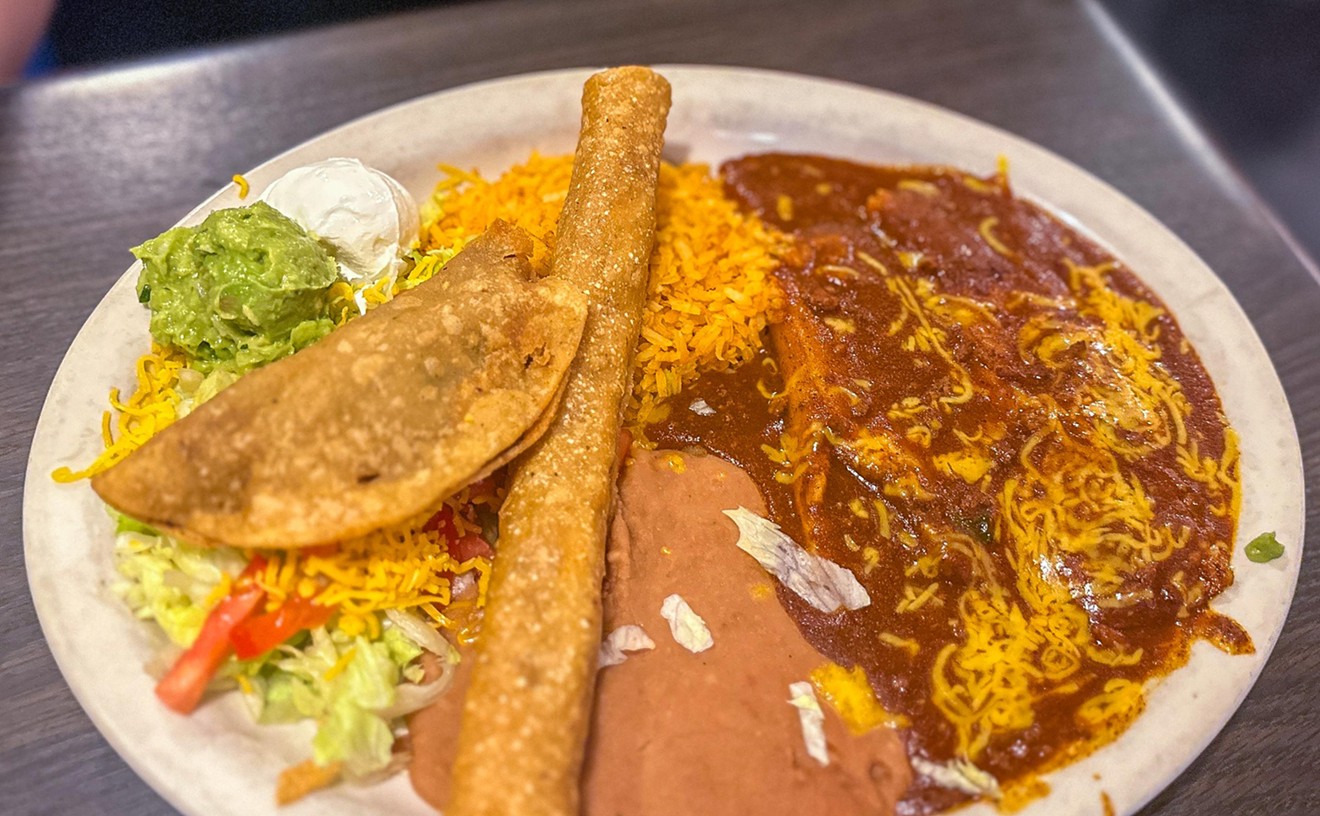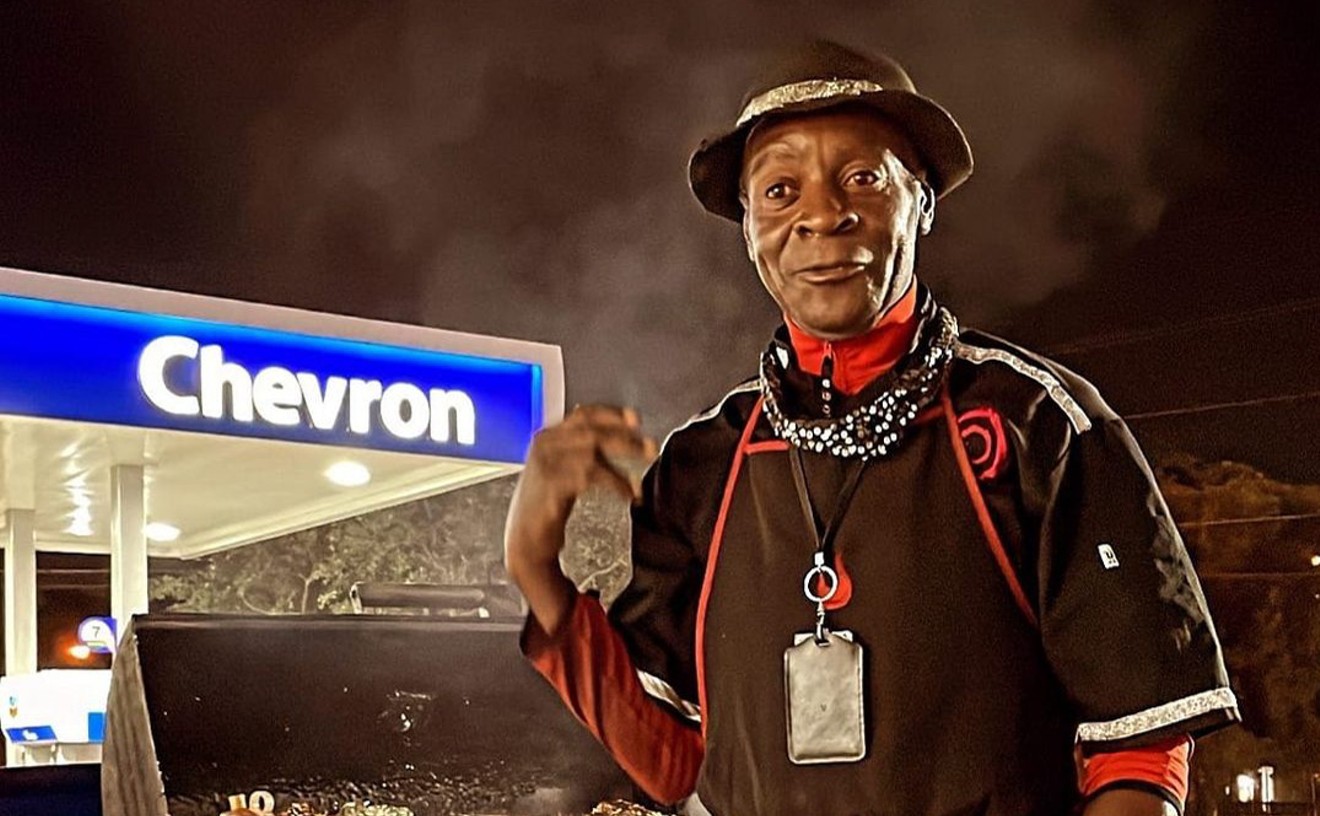Or start them, though Smith & Wollensky just might. Just after one of my visits to the famed New York steak house's Dallas outpost, I received a New York Times clipping from Gene Street, whose Consolidated Restaurant Operations Inc. runs S&W competitor and Tollway neighbor III Forks. Written by Florence Fabricant, this is the first New York Times piece I've read in a while that didn't involve plagiarism, fraudulent reporting, former editor Howell Raines' iron fists or publisher "Pinch" Sulzberger's stuffed moose (oops, maybe those last two were in the New York Daily News). It was about beef, specifically prime beef and how upscale steak houses are scrambling in the midst of a shrinking prime beef supply, which under better circumstances makes up some 3 percent of the graded beef in the United States. Prime is plummeting because of a handful of factors, mainly surging demand, a rough winter in the West and a cash flow crunch, which is forcing ranchers to slaughter their stocks before the telltale grain-fed marbling takes effect. Fabricant suggests some restaurateurs may be cheating, noting how easy it is to swap choice for prime, especially when it comes to tender cuts like filet mignon. Maybe this is why so much prime beef in Dallas tastes like it was pilfered frozen from a steak 'n' egger.
S&W's beef is better than that, but it doesn't dazzle. The bone-in Kansas City strip, a chalkboard special, arrives as a piece of charred geographical curvaciousness (it looked like Florida) on a white plate--22 ounces of beefy peninsula without even the benefit of a parsley sprig. The meat was underwhelming at first, at least at the edges where richness and juice retreated precipitously from the dry grainy texture, from which pebbles of fat peeked through here and there. But as the hacking approached the bone, everything changed. The meat was redder. The texture became silky. The flavor got deliriously broad, complex and buttery, so polluted was it from the marrow.
Was it good or disappointing? Too hard to tell. How's that for argument fodder?
Obviously, bone wasn't present to save the favorite of prime fraud: filet mignon. Though the meat was dense and had some lusty silken swatches sown through it, it had far too many mealy patches drained of flavor.
Don't weep, though. S&W has much more to offer than simple robber baron nutrition. When on hold, the musical phone banter references S&W's "whimsical Americana, art and antiques throughout," including toys, games and weathervanes. We also saw a big moose head--maybe an ode to "Pinch"--and some barometers. Parked in an evacuated Humpderdink's, S&W looks like a New England hunting lodge: white trim with dark green shutters and assorted lattice work. What could be beefier?
Service is largely attentive and executed with stealth (water comes out of nowhere, although we found ourselves filling our own wine glasses more often than not), and the servers know the menu, although one told us the yellow petroleum floating the whole roasted chicken was cayenne butter.
But it was far more ingenious than that. Stuffed with garlic cloves and lemon, the juicy and well-crusted flesh was actually sitting in a puddle of barbecue oil, far more inventive (and frightening) than simple peppered butter piddle. This liquid starts with house-made barbecue sauce treated with coffee grounds. The mix is then blended with olive oil and subjected to a slow refining simmer before it is filtered to clear yellow oil and applied to the chicken.
In all fairness, though, the server did return to correct his error. The servers are dressed in crisp white jackets with long chains of metal bars dangling from their lapels designating all of the S&W outpost cities. Slap a couple of gold epaulettes on their shoulders and a nice brimmed cap on their heads and they'd make swell banana republic dictator replicas, which might make those robber barons feel right at home.
And who would have thought a robber-baron den could make addicting gazpacho? But there it is, dark and delicately lumpy, ceremoniously poured from a silver urn into a white bowl. It looked like homicidal salsa. But it was deliriously brisk with cool rich tomato savor and a burst of heat that poked at the back of the throat long after the swallow. It's a compulsive slurp, a perfect richness delivery system among summer swelter.
Unlike most steak houses, S&W gives meticulous attention to engineered visuals on plates that don't contain beef. Asparagus and crabmeat salad contained a trio of blanched asparagus stalks laid across the plate, their bases partially shrouded in a pinch of greens, their tips reaching at once to the right, left and center, as if they aspired to the Oval Office. Half-moon sections of ruby grapefruit are placed on the edges of the plate as parenthetical enclosures. Three simple clumps of ivory crabmeat rest in greens off to the left, rich in moist and compellingly strong sea-washed savor.
A subversive undercurrent present in steak houses is the phallus imagery frequently doled onto the plate. Those asparagus stalks were impossibly fat and long and flaunted thickly blunted tips. The shrimp in the shrimp cocktail are worthy competitors. More straight than curvaceous--itself a suspicious anomaly--they, too, were stogie-thick and much longer than the ones permitted in grocery seafood cases. And they're served on a plate in the shape of a fish that is wearing bright red lipstick. At this point, it doesn't matter how they taste (dull, with the sweet, briny richness merely whispered at).
The best thing on the menu looks not like an e.e. cummings metaphor ("his scythe takes crisply the whim of thy smoothness..."), but like a badly scuffed, partially deflated deep-fried soccer ball. Crackling pork shank is ugly--uglier than a fish with lipstick. It's big and brown and bumpy and blemished. Plus, it sits in a rat's nest of sauerkraut studded with poppy seeds, so you can be assured the ugly will continue well into the evening. Even the preparation is ugly, so don't try it at home without smelling salts: The shank is scored, cured in salt and sugar for a day or two, braised in beef lard and deep-fried in oil. "It ain't something you'd want to eat every day," quips sous chef Nick Zotos. Yet you might wish you could. The curing not only breaks down the meat fibers for an alluring pulled-pork effect, it enriches it with hearty flavor. Plus, the deep-frying sheathes it in a crisp crust (leaking fat with every chew--yum) that seals in the juices. No doubt the beef lard is the culprit behind its incomparable richness, but how does one explain the clean savory flavors?
Clearly it's not S&W's steak pedigree that will end all arguments; it's this ugly ball of hog knuckle. Proving again that truth is stranger than The New York Times.
18438 Dallas North Tollway, 972-930-9200. Open for dinner 4 p.m.-midnight Monday-Friday and 4 p.m.-1 a.m. Saturday. Open noon-9 p.m. Sunday. $$$-$$$$










